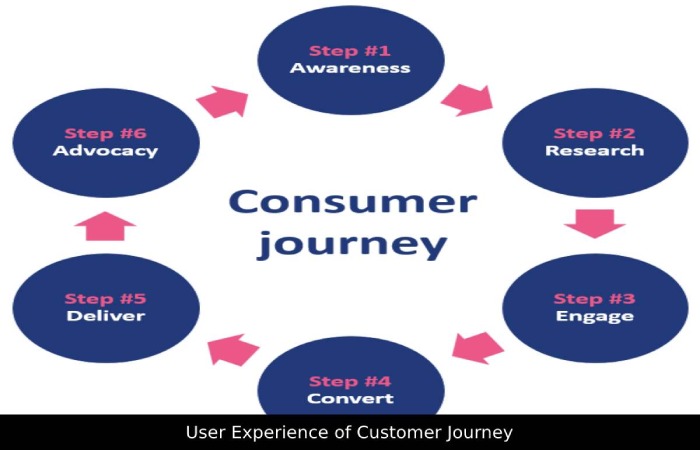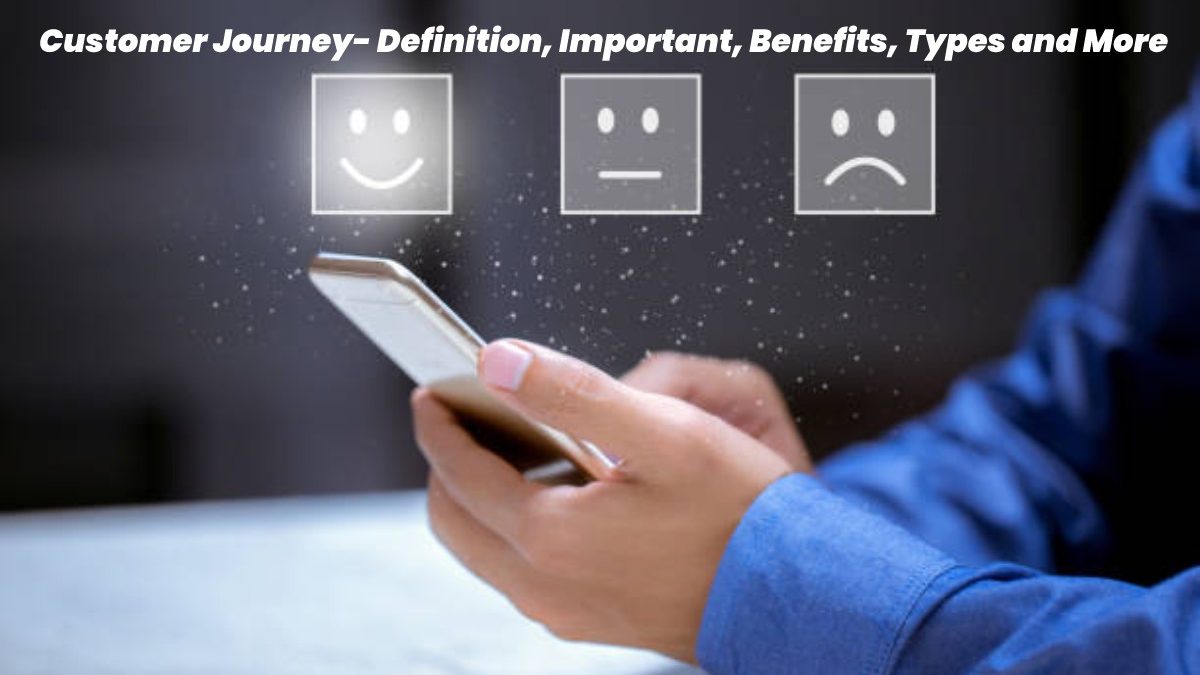Table of Contents
Customer Journey Definition
The Customer Journey is the journey, the path that a customer travels through the different points of contact and interrelation with the organizations. Because precisely, when talking about Customer Journey (CJ) or customer journey, what is being put in the central focus is the CUSTOMER. Do we know who he is? How does he behave? What is his need or his expectations? What factors decide his purchase? These responses are essential -among many more specific ones that must be known to understand the current and future user/customer.
User Experience of Customer Journey

When individuals need a product or service, they have various brands to choose from in a highly competitive market. For a brand to stand out and build a lasting relationship with its client, it must offer them the possibility of living a rewarding experience during their relational journey with the organization, which can virtual or physical, and even integrate both. Dimensions of the phases of the customer journey
Once we have the phases define, we must obtain information on each step for our buyers. To do so, we need to understand four critical dimensions of each of the stages, which will allow us to understand our buyer personas and how they progress through the customer journey.
Why is it Important to Create a Customer Journey?
Knowing the steps that the customer takes before reaching the product is very important because it will help define the marketing strategy used. In addition, strategic activities can carry out to guide the consumer towards the optimal route so that when they reach the final stage, the conversion process is faster.
Stages of the Coefficient Customer Journey
These stages are traditionally known from their English names:
Awareness: Translated as “Discovery” or “Awareness” by some marketing experts, this stage is at the top of the sales funnel, and here, the consumer barely discovers that he has a need or problem that needs to solve.
Consideration: In Spanish, “Consideration”, at this stage, the consumer already decides to get a product to solve that pain that he discovers. Therefore, he begins to look for different options of products or services that can help him. At this stage, he begins to read blogs, watch video tutorials, or research web pages to determine the best way to fix the problem.
Decision: This is the final stage of the customer journey from the traditional point of view. At this point, the consumer has decide to solve the pain or need with the company’s product or service.
At present: it is considered that there are other previous and later stages. However, the one that has had the most relevance is “Delight” or “Enjoy.
Benefits of Mapping the Customer Journey
If you have originated this far, you are probably thinking that knowing your consumers’ customer journey is complicated. It involves a lot of work, gathering a lot of information, and consulting many people.
You are probably wondering is it necessary to investigate this customer journey if I already have my buyer persona defined? The truth is that yes, and they are very different strategic elements.
To fully convince you, these are some of the benefits you will get from knowing your customers’ customer journey perfectly.
You will be able to get your customers to find you when they need your products or services. By understanding their needs and what process they follow to resolve them, you’ll be able to anticipate and create marketing campaigns that attract potential buyers (instead of having to go looking for them).
How to Create a Customer Journey Map Pace by Step?
Now that we have explained the customer journey and what information we need to know about each phase to map it correctly, along with the benefits it can offer us, let’s see what steps we have to follow to document it accurately.
The customer journey map is a lifelike representation of this process followed by the consumer. Documenting it visually helps marketing and sales teams (and others in the organization) understand what interactions consumers have with the business. This must be the case since the purchasing processes are usually not linear but end up being quite chaotic and with constant direction changes.
Types of Customer Journey Maps
Do you remember that the first step in mapping the customer journey was to understand its objective? This first step will define which of the four types of the customer journey you will create.
Depending on whether you have to understand the consumer’s day-to-day or how they manage to solve a specific action, among other things, you will have to use one of these types of customer journey maps:
1. Actual State
They try to show what the consumer is doing and thinking at a particular time. They are ideal for representing specific processes. Such as the registration process on a website, the unboxing of a product, or the visit to a company’s physical office.
2. A Day in My Life
They are similar to the type of map that we have already seen because they are fixed at the current moment. But they have a broader vision and show everything. What happens in the consumer’s day-to-day life, whether it relates to your company or not. For example. When designing a product design to cover unresolved needs in the consumer’s everyday life or create a gadget. Its mobile app will used throughout the day.
3. Future State
Unlike the previous two, which show the current reality of the consumer, this type of map shows future or ideal situations. Therefore, they can offer more innovative ideas by not considering the current limitations. How will a product or service work when a new technology development? This type of map is ideal for displaying it.
4. Service Plan
Also called “service blueprints”, these maps represent all the processes. If interactions and technologies (whether perceived by the consumer or not) involve creating an experience for the Consumer. For example, it could ideal for representing the process of booking. An appointment at a bank office to meet with a consultant and inquire about contracting a mortgage (with all the interactions that occur).
Conclusion
The customer journey or the buyer’s journey is the process carries out by the consumer. To find a solution to the problem or pain that afflicts him. The buyer journey is all the stages from when the consumer realizes. That he has a need that needs to resolve. In going through the search for possible solutions until he reaches your product and buys it.


